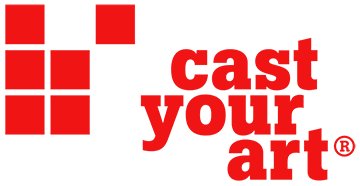Michael Scheirl – Typologies of the Invisible
Every city is a collective text, transmitting and storing the collective memory, a geographic and historical narrative, streets and highways articulate forms through which we relate to urban space or distance ourselves from it. Thus we all have using the street in common, be it by driving, by walking or by loitering.
Michael Scheirl’s topics stem from our everyday life, the daily routine. The spaces he depicts have a generic quality and yet are strangely familiar: the landscape is transformed into a mental construction of abstract surfaces with a blurred background, the street and its furnishings become a mechanism of memory, by extracting the unconscious thoughts of its users and embodying them.
In Michael Scheirl’s art two realities are represented, complementing each other: the outward reality that can be seen and perceived and the physical reality of the picture expressed by the use o0f pictorial means. The methods of subtleties offered by Scheirl are twofold: an apparent view of the environment where the location is depicted in the place it occupies ion the world that positions us, and an abstraction of subliminal spaces, streets and cities where dreams and memories coexist in equilibrium.
Between vanishing points and carefully poised atmospheres he distils his scenic truth to a pictorial ideal where the detail prevails over the mere anecdote, yet it never becomes artificial or theatrical. The method is never pretentious, light reflections, outlines and figures are an effortless scenography where the viewer comes across lost tales, fleeting traces, abandoned legacies or broken enigmas – streets and surfaces become a territory that can only be deciphered by the vocabulary of painting.
Scheirl demonstrates how to transform -with his hand- a piece of neutral life, devoid of any fascination because it has been seen daily and worn out by our gaze, in a moment triggering an epical view on perspectives created from endless spaces, suddenly expanded or contracted, in their uniqueness as a medium that cannot assimilate itself to anything else.
He is no chronicler of urban life and the human figure only has an elusive presence in his pictures. Even though he positions his pictures in this urban panorama, he does not require the street to act as a stage setting for storytelling.
The material reality is a less manifest feature in his work and yet the most present, in this way Scheirl emphasizes paintings original intention, to provide a hitherto unseen view on reality or to depict an unknown world that is concealed but latently existent in everyday life.
Scheirl is an observer and creator. He re-creates the urban landscape by extracting a little sample of the surface, deconstructing and reassembling it afterwards. His street and its components of traffic signs, tarmac, pavement, road-markings and manholes exists but has to be read anew in this organized visual deconstruction.
In his mapping of urban space, the painter at times hints at the relativity of time, the passing of life and our submission to the inevitability of our fate.
In spite of appearances, it is not the subject matter that guides the painters endeavour, but rather the emotion of painting and the necessity to see with the inner eye in order to reassemble the picture conceptually and graphically. The viewer is assigned to participate in the reconstruction of the reality he feels and sees. Scheirl believes in painting as a possibility, with its difficulty as an irresistible and enigmatic challenge. (written by Cem Angeli)
Das könnte Sie auch interessieren

RAINER GANAHL. I wanna be Alfred Jarry
10. May 2012
FRANZ SEDLACEK. "Evening Landscape" & "Song in the Twilight". A picture review by Gottfried Helnwein
21. December 2020
Alexander Steinwendtner - Georg Trakl Boulevard
29. November 2014
GEORG PINTERITSCH. Winner of a recognition prize of STRABAG Artaward International 2022
10. January 2023
WAS SIE SCHON IMMER ÜBER DÜRER WISSEN WOLLTEN. Teil 5. Nach der Natur - Vom Hasen und anderem Getier
30. July 2021
Evan Penny - Re Figured
10. February 2012
POP ART. The bright Side of Life
22. April 2024
